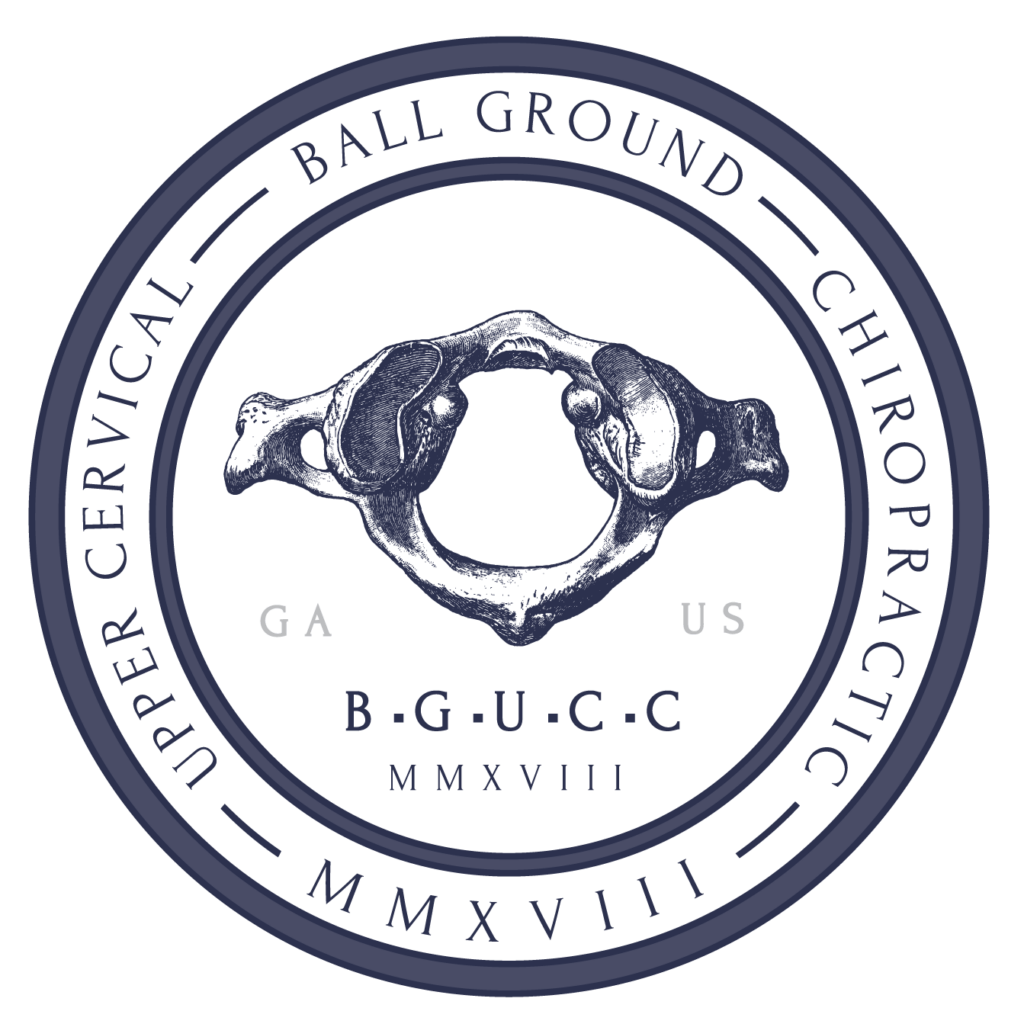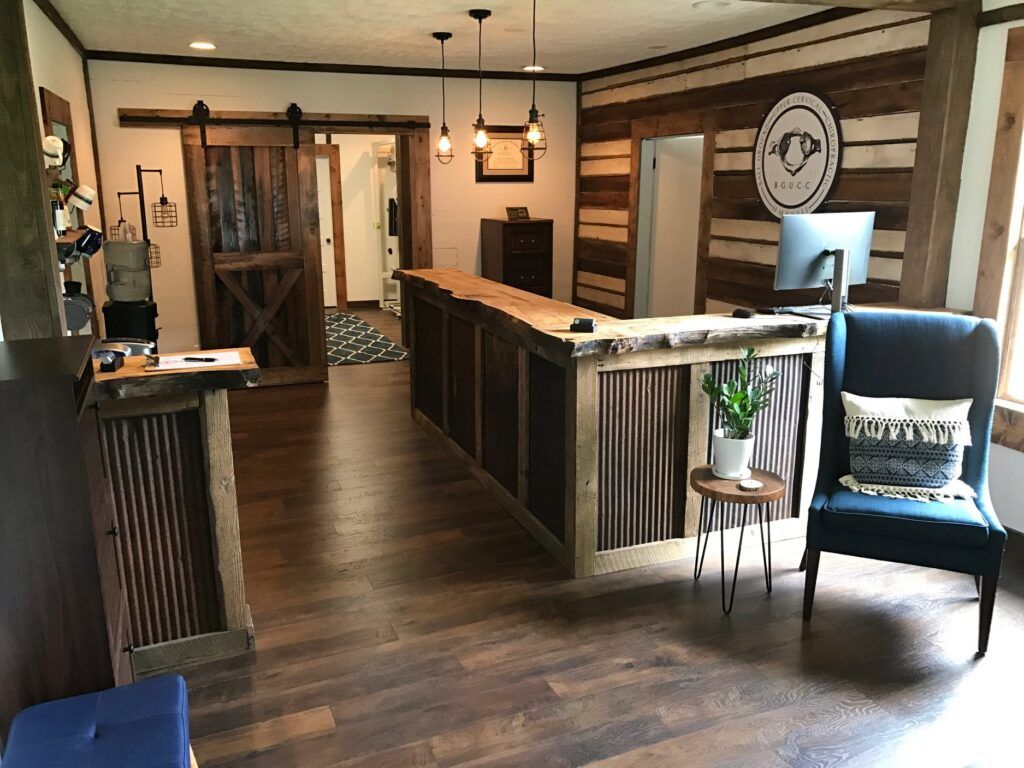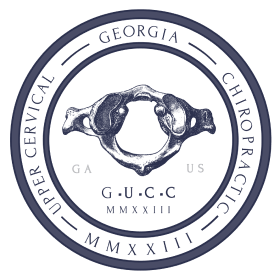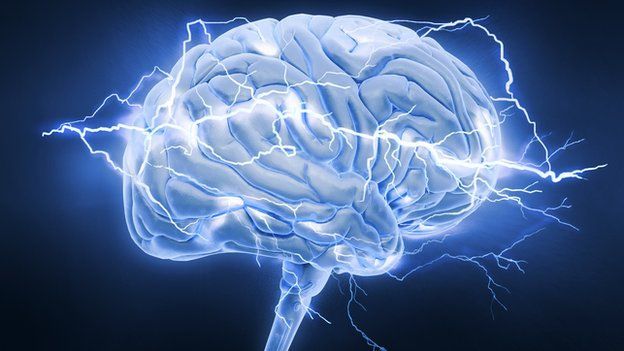Non-Surgical Spinal Decompression in Ball Ground
Table of Contents

Are you living with the burden of chronic back pain? If so, spinal decompression therapy may be an option for finding relief. This treatment is non-surgical and does not involve drugs – it has been demonstrated to help alleviate discomfort while also reducing pressure on injured discs and nerves in your spine.
In this blog post, we will examine all aspects of decompression therapy as well as other treatments which might provide effective back pain respite.
Our unique combination of Modern Pain Neuroscience, Chiropractic Orthospinology and Spinal Decompression allows us to see relief in patients in about 1/3 the time of traditional decompression treatments.
Here’s how we do it:
- Empowerment Focus : Our role as guides is to assist individuals in achieving their own goals and realizing their autonomy in managing their situation. We aim to create a pathway that transitions them from their current state to their desired outcomes. Our support is a guiding hand; we don’t do the work for them. Instead, we foster the belief that they are capable of handling challenges, such as pain, on their own.
- Education and Support : Education in this context is a nuanced process, involving the development of a therapeutic relationship and shared decision making process in order to help the patient understand the complex underpinnings of the perception of pain. When it comes to pain, this might involve exploring the individual’s understanding of their pain and the interpretations they attach to it based on their experiences. We then work towards helping the patient understand why the pain is occurring and Knowing Pains = Knowing Gains.
- Enhance Self-Efficacy : Self-efficacy, or the belief in one’s capability to execute actions and achieve goals, is crucial. Since pain is influenced by context, we assess the individual’s objectives and the obstacles they face in achieving them. This stage involves discussing and promoting Goal-Directed Activities.
- Address Catastrophizing : Dealing with Catastrophizing involves addressing fears and concerns the individual may have about their situation, particularly if they are prone to catastrophic thinking. This type of thinking often involves excessive worrying, exaggerating the severity of the situation, and a sense of helplessness, leading to imagining the worst possible outcomes.
- Combat Kinesiophobia : we collaboratively work to challenge the fear of physical activity and movement in a way that builds confidence and self-efficacy. This is done by understanding that it’s acceptable to experience symptoms within a manageable threshold and starting with activities that are within their comfort zone. As they achieve small successes, their confidence grows, reducing fears and increasing control over their situation.
- Foster Independence : Aim for individuals to be self-reliant, not dependent upon our treatments. We celebrate self-management and take joy in our patients independently handling their condition.
- Cost Effective : Being that we get you relief and results in 1/3 the time, we are far more cost effective than other decompression treatment clinics.
- How We Are Different: Us: 6-10 visits ($600-1000) vs Them: 24-36 visits ($1200-$4000). See the infographic below for a clear view on how we are different at Ball Ground Upper Cervical Chiropractic.
The Patient Process of Non-Surgical Spinal Decompression
Initial consultation and assessment
Visit us during your scheduled consultation for spinal decompression in Ball Ground, GA.
Before beginning treatment, patients undergo a thorough evaluation, including medical history, physical examination, and possibly imaging tests, to determine if they are suitable candidates for spinal decompression therapy.
Customized treatment plans
You can expect between 6 – 10 visits, depending on the case.
It is important to note that some other clinics will offer and implement high frequency care plans. It is in my humble opinion, that this is considered over treatment and damaging to the patient and lines the pocket of the business. They typically will utilize a low barrier of entry to the office and incorporate fear mongering education to upsell the patient into a 36 visit (or more) care plan that can cost anywhere from $2,000 – $5,000.
What to expect during a session
During the session, patients lie on the decompression table, and the device gently applies a horizontal force to the expand the spine and its associated structures.
Duration and frequency of treatment
Sessions can last anywhere from 12-35 minutes. This is dependent on the state and condition of the spine and the status of the injury.
Learn more about our process in our New Patient Center . If you have specific questions and/or concerns about the treatment process, consult directly with your Ball Ground spinal decompression medical professional.

Benefits of Non-Surgical Spinal Decompression
- Pain relief
- Increased mobility
- Reduced nerve pressure
- Long-term benefits & short-term relief
- Avoiding the use of drugs or surgery
Spinal decompression therapy is particularly beneficial for individuals with:
- Herniated or bulging Discs
- Degenerative disc disease
- Numbness and tingling in the arms or legs
- Posterior Facet Arthropathy/Syndrome
- Sciatica
- Chronic Low Back Pain
Contraindications and Risk Considerations for Treatment
Non-surgical spinal decompression therapy can be an effective treatment for certain types of back pain and spinal issues. However, like any medical treatment, it is not suitable for everyone. There are several contraindications and considerations to keep in mind:
- Pregnancy : Due to the nature of the treatment and the positioning of the body, non-surgical spinal decompression is generally not recommended for pregnant women.
- Severe Osteoporosis : Individuals with severe osteoporosis or bone weakness may be at risk of fractures or other complications from the forces applied during spinal decompression therapy.
- Spinal Fusion or Metal Implants in the Spine : Patients who have had spinal fusion surgery or those with metal implants, rods, or screws in their spine may not be suitable candidates for certain types of spinal decompression therapy.
- Spinal Tumors or Spinal Infections : Those with spinal tumors, infections, or malignancies should avoid this therapy and seek medical treatment for their condition.
- Severe Nerve Damage : Individuals with severe or advanced nerve damage in the spine should approach spinal decompression with caution, as it may not be effective or could potentially worsen their condition.
- Spinal Fractures : Patients with recent spinal injuries or acute spinal fractures should avoid this therapy until they have had a chance to heal or stabilize.
- Aortic Aneurysm : Patients with known aortic aneurysm should not undergo spinal decompression therapy due to the potential risk of exacerbating this serious condition.
It’s important for patients to fully disclose their medical history and current health conditions to their healthcare provider before starting non-surgical spinal decompression therapy. A thorough medical evaluation is necessary to determine if this treatment is appropriate and safe for each individual patient. Additionally, it’s crucial to have this therapy supervised by a qualified healthcare professional who can monitor the treatment and adjust as necessary for the patient’s safety and benefit.
Integrating Non-Surgical Spinal Decompression into Your Treatment Plan
Consulting with healthcare professionals
- Referral and Assessment : Start by consulting a spine specialist or a healthcare provider knowledgeable in spinal disorders. They can assess whether non-surgical spinal decompression is appropriate for your condition based on your medical history, symptoms, and diagnostic tests like MRI or CT scans.
- Interdisciplinary Approach : It may be beneficial to have a team approach. This team can include a physical therapist, chiropractor, pain management specialist, and primary care physician, ensuring a comprehensive evaluation of your suitability for this therapy.
- Regular Monitoring : Once the treatment begins, regular follow-ups with healthcare providers are crucial to monitor progress and make adjustments to the treatment plan as needed.
Combining with other treatments (e.g., medication, physical therapy)
- Medication : Non-surgical spinal decompression can be combined with medications like anti-inflammatories, muscle relaxants, or pain relievers to manage symptoms.
- Physical Therapy : Incorporating physical therapy can enhance the benefits of decompression therapy. Exercises and stretches can strengthen the back muscles, improve flexibility, and promote spinal health.
- Alternative Therapies : Acupuncture, massage therapy, or yoga may also be recommended as adjunctive treatments to support the spine’s health and alleviate symptoms.
Lifestyle changes to complement the treatment
Managing chronic low back pain often requires a multifaceted approach, combining medical treatments with lifestyle changes. These changes can greatly enhance the effectiveness of of the treatment, contribute to pain reduction, and improve overall quality of life. Here are some key lifestyle changes that can complement the treatment for chronic low back pain:

- Regular Physical Activity : Engaging in regular, low-impact exercises can strengthen the muscles in the back and abdomen, which are crucial for supporting your spine. Activities like walking, swimming, or yoga can be beneficial. Always consult with a healthcare provider before starting any exercise regimen.
- Frequent Ergonomic Adjustments : Making changes to your work and home environments to support your back can be helpful. It is important to consider that it isn’t particularly any one position that is “bad” for you, but any position for far too long. In fact, it is ok to slouch. But slouching for 3-4 hours straight? No bueno. Sitting perfectly upright like a British Soldier for 3-4 hours? Also uncomfortable. The name of the game is to provide the body with a healthy amount of ergonomic variation vs defining any one position as bad. Take frequent breaks and continue to move your body if you have to work for an extended period of time.
- Stress Management : Stress can exacerbate chronic pain, including back pain. Techniques such as mindfulness, meditation, deep breathing exercises, or yoga can help manage stress.
- Quit Smoking : If you smoke. Quit.
- Stay Hydrated: Drink more water.
- Mind-Body Techniques : Incorporating techniques like biofeedback, guided imagery, or cognitive-behavioral therapy can help manage the psychosocial aspects of chronic pain.
It’s important to note that these lifestyle changes should complement, not replace, the treatment plan prescribed by healthcare professionals. Always discuss with a healthcare provider before making significant changes to your lifestyle, especially if you have chronic health conditions.
Cost and insurance considerations
- Understanding Costs : Non-surgical spinal decompression therapy can vary in cost. It’s important to get a clear understanding of the total cost of the treatment plan, including the number of sessions needed.
- Insurance Coverage : Check with your insurance provider to see if this therapy is covered under your plan. Coverage can vary greatly depending on the insurer and specific policy.
- Payment Options : If insurance doesn’t cover the treatment, ask the clinic about payment plans or options for financial assistance.
- Comparing Providers : Costs can vary between providers, so it may be worth comparing prices while also considering the quality and reputation of the clinic.
In conclusion, successfully integrating non-surgical spinal decompression into your treatment plan involves a collaborative approach with healthcare professionals, combining various treatments for optimal results, making supportive lifestyle changes, and carefully navigating cost and insurance aspects.
What the Research Says
Understanding the hierarchy of research and evidence is crucial in interpreting data, especially in the context of medical treatments and interventions. This hierarchy ranges from randomized controlled trials and systematic reviews at the top, indicating the highest level of evidence, down to case reports and expert opinions at the bottom.
Importance of the Evidence Hierarchy
- Quality of Evidence : Higher levels of the hierarchy, such as systematic reviews and meta-analyses, synthesize data from multiple studies, offering a more comprehensive and reliable assessment of a treatment’s effectiveness.
- Reducing Bias : Randomized controlled trials (RCTs) are designed to minimize bias, providing more dependable results than observational studies or case reports.
- Generalizability : Higher-level studies typically involve larger and more diverse populations, making their findings more applicable to the general population.
Limitations of Clinical Case Studies and Anecdotes

- Lack of Control Groups : Case studies and anecdotes do not have control groups, making it difficult to determine if outcomes are truly due to the intervention or other factors.
- Subject to Bias : These forms of evidence are highly susceptible to selection bias and cannot reliably establish cause and effect.
- Limited Generalizability : Results from a single case or a small group of cases may not be applicable to broader populations.
Despite these limitations, case studies and patient anecdotes can still play a valuable role in shared decision-making:
- Filling Evidence Gaps : They can provide insights into treatments where higher-level research is lacking or not feasible.
- Individualized Care : They can highlight unique cases or outcomes, offering options for personalized treatment plans.
- Patient-Centered Approach : Anecdotes can resonate with patients’ experiences, helping them relate to others with similar conditions and feel more informed and comfortable with their treatment choices.
In shared decision-making, it’s important to balance the rigor of high-level evidence with the nuanced, personal insights that case studies and anecdotes provide. This approach ensures that patients receive care that is not only evidence-based but also aligns with their personal values, preferences, and specific medical circumstances.
The review of the scientific literature on non-surgical spinal decompression therapy reveals a significant discrepancy between marketing claims and evidence-based practice. This is unfortunately more common in healthcare than it should be.
Summary of Key Findings
- Background and Use : Spinal decompression therapy, a form of intermittent motorized traction, has been increasingly used for low back pain treatment. It has evolved from simple static traction and is now heavily marketed to manual therapy professions and consumers.
- Marketing vs. Efficacy : Intense marketing programs often claim high success rates for spinal decompression therapy. However, the scientific literature provides limited evidence supporting these claims. Only one small randomized controlled trial (RCT) and several lower-level efficacy studies with questionable quality have been conducted.
- Study Review and Limitations
:
- A small RCT comparing VAX-D therapy with TENS (Transcutaneous Electrical Nerve Stimulation) showed some improvement in the treatment group, but the study had several limitations, including a small sample size and lack of blinding.
- Other studies like the one comparing motorized traction with spinal decompression (DRS System®) used descriptive statistics without significant methodological rigor.
- Case series studies reported success rates but lacked control groups or consideration of placebo effects, making it difficult to establish treatment efficacy.
- Concerns about Objectivity and Research Quality : Many studies were marketing-oriented, and some were published in sections of journals not dedicated to rigorous scientific investigation. The objectivity of the research is questionable, with some authors having financial interests in the technology they studied.
- Conclusion : The current evidence does not adequately support the routine use of non-surgical spinal decompression therapy. It has not been sufficiently compared with other less expensive and better-researched conservative treatments, such as exercise or spinal manipulation Daniel 2007.
In summary, while non-surgical spinal decompression therapy is widely promoted and utilized, the supporting scientific evidence is limited and not robust enough to justify its widespread adoption, especially considering the availability of other less expensive and more thoroughly researched treatment options.
Final Thoughts
In conclusion, non-surgical spinal decompression therapy offers a potential alternative for individuals suffering from chronic neck pain or back issues related to herniated discs, degenerative disc disease, sciatica, or posterior facet syndrome. While the scientific evidence supporting its effectiveness is limited, it may provide relief for some patients. However, it’s important to note that this therapy should be approached under the guidance of a healthcare professional and incorporated with some type of graded physical activity exposure and goal directed activities.

We strongly encourage anyone considering non-surgical spinal decompression therapy to seek professional advice and consult with a spinal specialist. Seek spinal decompression therapy at our Ball Ground location. Each individual’s condition is unique, and a thorough evaluation by a qualified healthcare provider is necessary to determine if this treatment is appropriate and safe.
We value your feedback and invite you to comment and ask questions. If you found this information helpful, consider subscribing for more health-related content. Remember, your health is important, and making informed decisions is key to your well-being.

Ready to Make an Appointment?
We serve patients in Ball Ground, GA.


